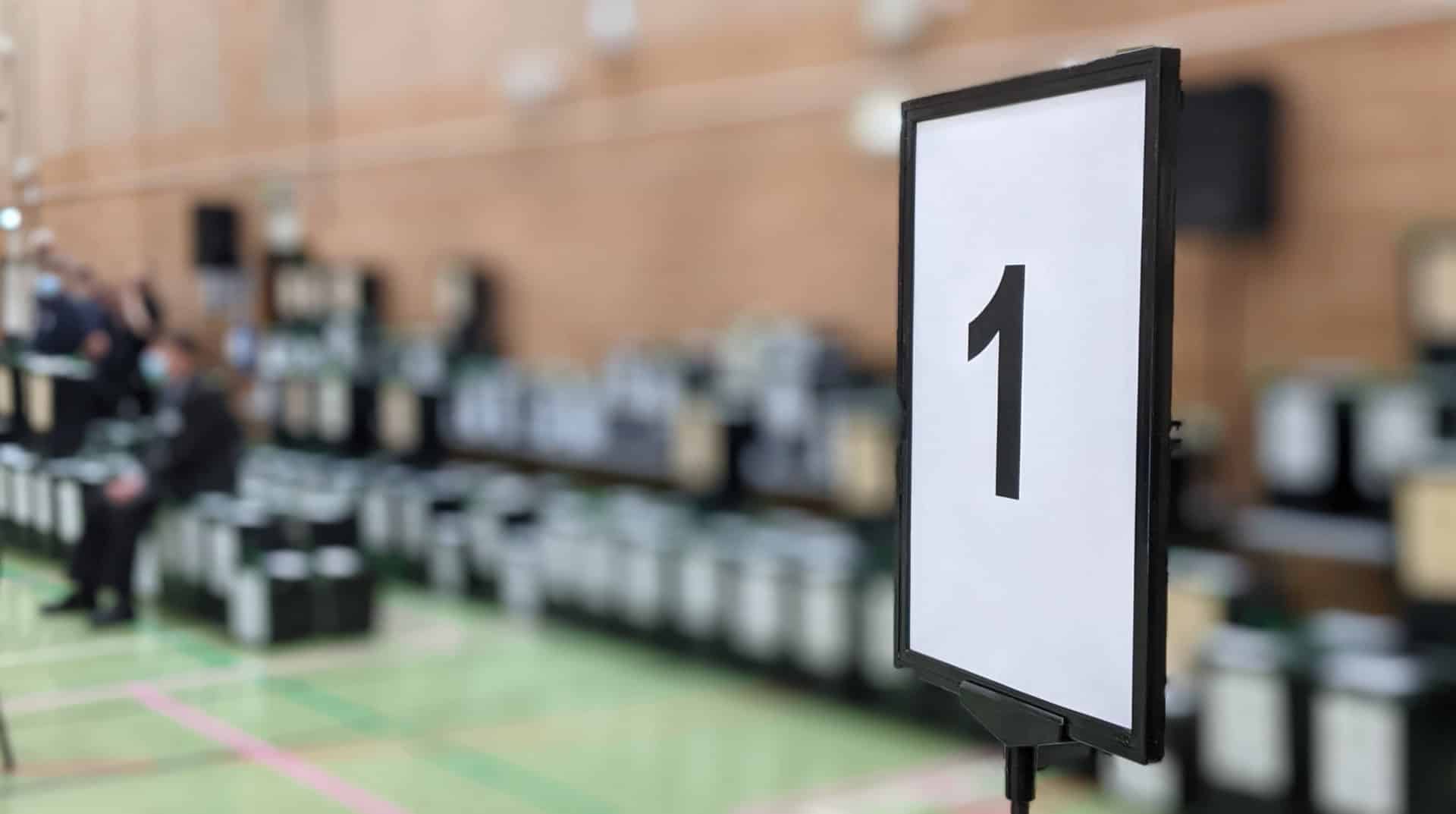At time of writing, there are at least five more hours to get to your local polling station to vote. Don’t forget your photo ID (it can be out of date so long as the photo still looks like you) and if you need to find where your local polling station is, check here.
This historic election sees the formation of two new constituencies, Isle of Wight East and Isle of Wight West. The Island has been split into two constituencies to provide greater representation in Parliament, where the average size for other constituencies is 70,000.
Isle of Wight Wight East has 55,855 registered voters (10,159 of which are postal votes) and Isle of Wight West has 55,406 registered voters (10,012 of which are postal votes).
The 2019 election saw a 66.9% turnout, so it will be interesting to see what happens today.
The declaration is expected to take place around around 3am on Friday morning – OnTheWight will be reporting live from the count through to the small hours.
How will the votes be counted?
We thought voters might be wondering what happens with your voting slip once you have placed it in the ballot box.
This handy guide below, produced by the Isle of Wight council, will shed some light on the process.
Stage 1 – Check in
The sealed postal votes that have been returned and processed on election day were taken to the count venue earlier and have been securely kept in a locked room with seals applied. The room also includes postal vote ballot boxes that will be used to store any further postal vote ballot papers that have been received in the poll stations.
After the Candidate/Agent briefing, these will be brought into the count hall, checked to ensure all boxes are in place and then distributed out to the count tables for verification. This process will be communicated over the PA, advising which postal vote box is being verified on which table.
Whilst that process is underway, staff working on behalf of the Assistant Returning Officer (ARO) will be receiving the ballot boxes and sealed sacks from each of the poll stations. The sealed ballot boxes will be brought directly into the count hall and placed on display; the sealed sacks will be taken to the unused ballot paper team.
Postal Vote Processing
Part of the paperwork received from each poll station will be an envelope containing any postal votes that have been correctly handed in at the polling station. These will need to be processed to ensure all of the paperwork is in order, before any ballot paper from those postal voters can be included in the verification/count.
This will entail the same process that has taken place on the days leading up to and including the day of poll. The process can be observed on the tables clearly marked as handling postal votes (one for East and one for West).
Stage 2 – Verification
Each ballot box will be emptied onto the count table and shown to be empty to any agents in the vicinity. The Count Assistants will be tasked with counting the number of ballot papers from each box.
Every effort will be made to process those ballot papers Face Up to ensure the secrecy requirements, and at this stage there will be no sorting into votes for each candidate.
Count staff are seeking to verify the number of ballot papers matches the number of papers issued (or received) and recorded on the Presiding Officers’ ballot paper account. There may be a delay in verifying some boxes as the ARO is required to determine the reasons for any discrepancies before producing the final verified total.
Once all of the boxes have been verified (in our count all should have been returned to the back of the venue with a large green cross indicating it has passed verification), the ARO will produce a statement of verification. Copies can be made available to Agents if they request, but the overall verification figure will be announced over the PA.
Anything found in a ballot box that is not a ballot paper (i.e. poll card) will be removed and recorded to ensure the verification figure is accurate.
Unused ballot papers
In order to ensure an accurate verification figure, it is necessary to also verify the number of unused (not issued) ballot papers received back from each poll station. The combined sum of those issued and those not, should match the total number of ballot papers issued to each presiding officer at the open of poll.
Stage 3 – Counting the votes
There is a requirement to mix the ballot papers in one box/from one poll station with at least another, to ensure it is not possible to identify voting patterns for any given electoral area.
On the Island, we display which box numbers will be mixed on each count table and we apply a mini count approach, with each count table producing an individual total for the votes cast for each candidate, which are then collated centrally to produce the overall result.
Each count table will be asked to collect the ballot boxes allocated to their table and to mix the contents of those boxes. This process can be observed by attendees. Once mixed, the count assistants will be asked to sort the ballot papers into candidate order and then count the number of votes cast for each candidate.
Once the ARO (or deputy) has conducted reasonable checks to ensure the result of each mini count is correct, the information will be collated centrally. Once all of the mini counts have been confirmed, the ARO will share the provisional result with the candidates and agents only. At this stage either the candidate or agent can ask the ARO for a recount of the votes.
The ARO can refuse to recount if they think the request is unreasonable.
What if the vote on a ballot paper is not clear?
A ballot paper will not be counted if it:
- Does not contain an official mark.
- Contains votes for more than one candidate.
- Contains any writing or mark that can identify the voter.
- Is unmarked.
- Does not indicate the voter’s intention with certainty.
Count Assistants or Supervisors are not able to determine the validity of any doubtful ballot papers, therefore any that are doubtful will be placed to one side and the ARO (or deputies) will undertake such adjudication. The adjudication of any doubtful ballot papers can be observed by candidates or agents. The ARO (or deputy) must mark the word “rejected” on any ballot paper that is rejected. They must add the words “rejection objected to” if a counting agent objects to the ARO’s decision.
If the voter’s intention is clear on the ballot paper and the voter cannot be identified by any mark or writing, it will not be void if a vote is marked:
- Elsewhere than the proper place.
- By other means than a cross (e.g a tick).
- By more than one mark.
The decision of the ARO is final.
The ARO must draw up a statement showing the number of ballot papers rejected for these reasons.
The declaration
Once all of the above has been completed, candidates will be asked to proceed to the stage. It is estimated that this will be at around 3am on Friday morning.
The Returning Officer will declare the candidate with the most votes is duly elected.
There may then be the opportunity for brief speeches.
OnTheWight will keep you updated through the night with a live blog. Now time for a power nap!





